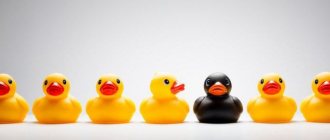- November 29, 2018
- Psychological terms
- Olgerd Semenov
What is behavior? The answer to this question is not as simple as it might seem at first glance. Behavior is the response of a system or organism to various stimuli or actions. Whether they are internal or external, conscious or subconscious, open or hidden, and voluntary or involuntary.
Understanding behavior computer science perspective, it consists of actions, operations, interactions with surrounding beings and environment and its properties. Behavior can be represented as a vector of existence. The rules of behavior are what this very vector determines.
Biological context
Biology is very closely related to the issue described in this article. Social behavior is not something that is unique to humans. It arose as a result of long-term natural selection. Although there is some disagreement about how to precisely define behavior in a biological context, one general interpretation, based on a meta-analysis of the scientific literature, states that “behavior is the internally coordinated responses (actions or inactions) of entire living organisms (individuals or groups) to internal and/or external incentives.”
A broader definition of behavior, applicable to plants and other organisms, is similar to the concept of phenotypic plasticity. It describes it as a response to an event or environmental change during a person's life that is different from other physiological or biochemical changes and occurs more quickly. At the same time, it excludes changes that are the result of development (ontogenesis). Behavior may be innate or learned from the environment. The principle of a behavior is whether it is dependent on the environment or is externally learned. That is, it is influenced by both the environment and the environment of other creatures and the will of the subject himself.
What is behavior? It can be considered as any action of the organism that changes its relationship to the environment. It provides access beyond the body into the environment.
Psychology of women
The psychology of the fair half of humanity is based on several circumstances:
- Character type. Most women are sanguine. They are active, they are characterized by mood swings, they know how to manage feelings, and subordinate circumstances to their desires.
- Upbringing is what parents instilled in a little girl that determines her actions and behavior.
- Experience - if she has faced negativity all her life, she stops trusting people and becomes lonely. Her behavior is different from the standard.
The psychology of a woman’s behavior is determined by her attitude towards a man. Psychologists believe that women have a natural ingenuity that helps them in life. But they primarily direct their ingenuity to relationships with men. For example, they try to appear strong and independent, they always have some hobbies and hobbies, often planned personal time, and so on.
Ecology
Behavioral ecology is the study of the evolutionary basis of animal behavior due to environmental pressures. Behavioral ecology arose from ethology after Niko Tinbergen outlined four questions that should be considered in the study of animal behavior, among which are proximate causes, ontogeny, survival, and phylogeny.
If an organism has a trait that provides a selective advantage (that is, has adaptive value) in its environment, then natural selection will favor it. Adaptive meaning refers to the expression of a trait that affects fertility, as measured by an individual's reproductive success. Adaptive traits are those that produce more copies of a person's genes in future generations. Maladaptive traits are those that cause you to produce less. For example, if a bird that can sing louder attracts more mates, and singing loudly is an adaptive trait for that species because a louder bird is more common than less loud birds, thereby passing the louder genes into future generations.
Links[edit]
- Hemakumara, GPTS. and Rainis, R. 2021. Modeling the spatial behavior of unauthorized housing in Colombo, Sri Lanka. KEMANUSIAAN Asian Journal of Humanities 25(2): 91–107, https://doi.org/10.21315/kajh2018.25.2.5
- ^ a b Kagan, Jerome, Mark H. Bornstein, and Richard M. Lerner. " Human behavior ". Encyclopedia Britannica
. 2021. Retrieved June 5, 2021. - Farnsworth, Bryn. July 4, 2021 "Human Behavior: The Ultimate Pocket Guide." iMotions
. Copenhagen. So what is behavior? - ↑
Argyle, Michael and Luo Lu.
1990. “The Happiness of Extroverts.” Personality and Individual Differences
11(10): 1011–17. DOI: 10.1016/0191-8869 (90) 90128-E. - ↑
Anholt, Robert R.H. and Trudy McKay.
2010. Principles of Behavioral Genetics
. Academic Press. ISBN 978-0-12-372575-2. Post your resume. - Purcell, Sean. 2012. Appendix "Statistical Methods in Behavioral Genetics" in Behavioral Genetics
(6th ed.), Edited by R. Plomin, J.C. DeFries, V.S. Knopik, and J. M. Neiderhiser. Worth it for publishers. ISBN 978-1-4292-4215-8. Retrieved June 5, 2021. Lay summary. - "'How religious beliefs vary across countries among people of all ages". Pew Forum on Religion and Public Life. June 13, 2021. Retrieved March 9, 2021.
- Spilka, B. and D. McIntosh. 1996. The Psychology of Religion
. Westview Press. - Noor, Zainulbahar; Pickup, Francine (2017). "Zakat Requires Muslims to Donate 2.5% of Their Wealth: Could This End Poverty?" . The keeper
. - Wyer, R. S. J. 1965. "The Effects of Childhood Attitudes and Behavior on Children's Reactions to Hypothetical Social Situations." Journal of Personality and Social Psychology
2(4): 480–86. ProQuest 60622726. - Kecmanovic, D. 1969. “The Paranoid Attitude as a Common Form of Social Behavior.” Sociology
11(4): 573–85. ProQuest 60877639. - Yardley, Jim (2014). "Spain, land of 10pm dinners, asks if it's time to reset the clocks". New York Times
. - Gorvett, Zaria (2019). "The Norwegian Art of the Packed Lunch". BBC News
. - "Heat Wave: Is There More Crime in Hot Weather?" . BBC News
. 2021. - Rath, Arun (2018). "Heat and Aggression: How Hot Weather Helps Us Get Offended". WGBH.
- Dabb, C (May 1997). The relationship between weather and children's behavior: A study of teachers' perceptions. Ural State University thesis.
The Science of Survival
Individuals always compete with other individuals for limited resources, including food, territory, and mates. Conflict occurs between predators and prey, between rivals and comrades, between siblings, partners, and even between parents and offspring. Roles of behavior are a special niche that the subject occupies in this permanent conflict with everyone.
The meaning of social behavior depends in part on the animal's neighbors. Behavior is something that is often consistent with surrounding members of the same species. For example, the more likely a rival male is to abandon a threat, the more value the second male gains from the threat he supposedly poses. However, to protect the group, males can also act as a team. When a population exhibits a series of interacting social behaviors such as this, it can develop a stable pattern known as an evolutionarily stable strategy (or ESS). This term, derived from economic game theory, became prominent after John Maynard Smith (1982) recognized the possible application of the concept of Nash equilibrium to model the evolution of behavioral strategies.
Forms of human behavior
Based on socionics and Dellinger’s theory of psychoforms, forms of human behavior were identified:
- Dominant is the behavior of leaders, realists, and practitioners.
- Creative - characteristic of people with abstract-imaginative thinking. They rely more on intuition, have ingenuity, premonition, imagination, and are completely divorced from reality.
- A harmonizing form of behavior is characteristic of people who are endowed with empathy, ethics, and subtle diplomacy.
- Normalizing is the behavior of logical people capable of analyzing facts.
Usually people have a combination of two types of behavior, one of which is more pronounced.
Human society
Human behavior is the responses of people or groups of people to internal and external stimuli. It refers to the array of every physical action and observable emotion associated with people. And also with humanity. Although specific personality and temperament traits may be more consistent, other behaviors will change as a person moves from birth to adulthood. In addition to patterns dictated by age and genetics, behavior is something that is driven, in part, by thoughts and feelings. This is an understanding of the individual psyche, identifying relationships and values among other things. Social behavior is a subset of human behavior that examines the significant mutual influence of social interaction and culture. Additional influences include ethics, environment, authority, rapport, hypnosis, persuasion, and coercion. Moral behavior is that which is consistent with social ethics and morality.
Applied behavior analysis: essence, stages, criticism
Applied Behavior Analysis (or ABA Therapy/ABA Therapy) is a behavioral therapy that focuses on engaging autistic children in their social environment. In PAP therapy, the actions of the guide (the direct person working with the child, usually one of the parents) are aimed mainly at creating favorable external conditions in which the autistic child will develop, socialize and accept the current environment.
Essentially, those diagnosed with autism spectrum disorder suffer from deficits in social interaction and communication, often have a limited range of interests, and may perform repetitive activities. Applied behavior analysis is aimed precisely at leveling these symptoms, teaching the child to understand the world, respond to it and successfully contact it.
The principles of behaviorism - stimulation, encouragement - are actively used in this technique. However, it is important to remember that in this case, a one-way flow of exclusively positive emotions should emanate from the conductor. In general, this technique, although it is aimed at an autistic child, is transmitted through a guide; in fact, he (she) becomes the main participant in behavioral analysis.
A child, being subject to applied behavior analysis, should not see irritation, impatience, much less aggression on the part of the conductor. The primary task is to teach the child to accept his emotions:
- pride and joy for success;
- patience and perseverance in the event of a failed attempt, disobedience.
It is important for the mentor to remain calm, not give reasons for frustration and closure, and constantly analyze the child’s behavior. Some autistics are characterized by greater development of hearing, others - vision, some perceive reality to a greater extent through taste, and others - touch. When looking for an approach to a child, it is important to choose the right channel through which you can influence brain activity to a greater extent.
For applied behavior analysis to really work, it must be practiced daily. Doctors call the figure approximately 5-6 hours a day, but the PAP technique should become a way of life, especially for the handler. The constant sensitive, attentive, patient attitude of the parent (or other guide) while simultaneously analyzing behavior should be introduced into every minute practice. Of course, this costs a lot of effort, but remember that as the child’s condition improves, everything will return a hundredfold.
Conventionally, there are four stages when using the ABA technique. Let's look at each of them.
Signal - understanding
At the first stage, the child tries to find contact with the outside world, tries to understand what is required of him, then evaluates this and gives a response to the request from the external environment. For example, the handler wants the child to shake his head. This is a simple step towards building more complex combinations, but it is very important, since at this stage the child learns to perceive signals from the outside and respond to them. Encouragement from the handler, who sees the success of his ward, is also very important. If the patient does not succeed, be patient - everything will definitely progress.
Complication
If at the first stage we learned to simply recognize signals and respond to them, here we connect simple steps and create more complex combinations, using different parts of the autistic child’s brain. For example, if you previously learned to wave your hand goodbye to someone, then at the second stage try to add verbal contact - wave your hand and say “bye” at the same time. The guide’s task is to awaken the autistic person’s brain and make it work. Remember, this is the least studied organ, subject to changes to the most complex extent. Have the will and patience.
Generalization of skills
Having mastered the two previous stages, ordinary signals should be turned into specific requests from the conductor. The degree to which these requests are fulfilled expresses the child’s possession of certain skills. Commands like “give”, “take”, “bring”, “put down” are cumulative and consist of individual actions, simple steps, which, in theory, were learned in the first and second stages. Therefore, here the child becomes more prepared for life in society, can perceive complex signals and respond to them.
"The publication"
When a child with autistic disorder has already mastered all of the above learning, he should directly go into practice and try to communicate with people around him. Not with mom, dad, grandma, relatives or a psychologist, but with strangers. However, remember that these people must be benevolent and adequate. By the way, it is absolutely not recommended to introduce a child into an environment with equally special children, because their reaction may be a little unusual, which can confuse and upset him.
Based on the concept of ABA therapy, after going through the four stages described above, the child will be able to socialize and immerse himself in the environment of other people.
However, many psychologists and experts criticize the PAP technique, expressing the idea that the child in this case is subjected to some kind of training, the guide stimulates, and the child follows commands only for the sake of encouragement and receiving praise. In fact, the PAP method is based specifically on stimuli, reward and response. However, there is no need to doubt its effectiveness today.
One of the mentors of the ABA method is Marina Azimova, Master of Pedagogical Sciences, Associate Professor at Moscow State University of Psychology and Education, a certified behavior analyst, and simply the mother of an autistic child. In this video you can listen to her lecture, where she shares in detail her experience of using applied behavior analysis:
The PAP technique is applicable not only to children with autism, but also to ordinary healthy people of all ages. The main thing is to understand the essence of the technique: take B. Skinner’s formula into account and change your habits, as well as influence the behavior of other people.
By the way, our online program “Mental Self-Regulation” can be an excellent option for influencing your behavior, where in 6 weeks you will learn how to deal with stress and apathy, build good relationships with friends and colleagues, and also defeat procrastination.
In conclusion, I would like to remind you that if you are raising a child with autism, remember that you can do it and you will definitely succeed. Otherwise, it would not have been sent to you. The main thing when raising this child is not to let him understand that he is very different from others. Create an atmosphere around a completely ordinary child, and then he will believe and will not feel uncomfortable in a social environment.
We wish you good luck!
We also recommend reading:
- Storytelling
- Socialization of personality: briefly about the main thing
- Theories of thinking
- Situationism in psychology and human behavior
- Associative learning
- Forms of social behavior of people
- Fear: psychological foundations and famous scientific studies of this phenomenon
- Gordon Allport's Principle of Functional Personal Autonomy
- Behaviorism: basic principles, representatives and directions
- Transactional Analysis
- Skinner's operant conditioning as a technology for personality formation
Key words: 1Psychoregulation, 1Self-knowledge
Social norms
The behavior of people (and other organisms, or even machines) falls within a range, some of which are common and some of which are unusual. That is, some types of behavior are acceptable forms of behavior, and some are unacceptable. In sociology, it generally includes actions that have no meaning, are not directed at other people, and therefore all basic human actions. Behavior in this general sense should not be confused with social behavior, which is more advanced social action specifically directed towards other people. Acceptability of behavior depends largely on social norms. And it is regulated by various means of social control. Human behavior is studied by the specialized academic disciplines of psychiatry, psychology, political science, sociology, economics and anthropology. Standards of behavior are what must be observed when living in society.
A person's behavior is felt throughout his life. It involves acting on various factors such as genetics, social norms, religious belief and relationships. Behavior is influenced by certain traits inherent in each person. The characteristics vary from person to person and can produce different actions or behaviors depending on each individual. Social norms also influence behavior. Due to the inherent conformist nature of human society as a whole, people are pressured to adhere to certain rules and to follow rules for exhibiting certain behaviors in society. Which determines the interaction of people. Different types of behavior are considered acceptable or unacceptable in different societies and cultures. The core belief can be perceived through that person's religion and philosophy. It shapes the way a person thinks. And this, in turn, leads to different behavior among people. Attitude can be defined as "the degree to which a person has a favorable or unfavorable evaluation of the behavior in question." A person's attitude is basically a reflection of the behavior he or she will portray in specific situations. Thus, human behavior is greatly influenced by the habits we use on a daily basis. Deviant behavior is something that receives a negative assessment from society.
What does a man's behavior tell us?
The psychology of the strong half of humanity is always associated with the performance of certain actions: to conquer, to obtain, to win. Therefore, in their games from childhood there is always a spirit of competition in endurance, strength of character, and strength.
All their actions are aimed at the final result. From childhood, their self-esteem is based on abilities and achievements.
The words and actions of men and women are different. Therefore, when talking with them, you need to pay attention to their general demeanor. If during a conversation he crosses his legs or arms, sits half-turned, it means he is not listening, he seems to be shutting himself off from the information. If he looks into your eyes and periodically glances at your lips, it means he is interested in the conversation.
If a man adjusts his tie, frequently changes his position, has high eyebrows and wide eyes, he is interested in the woman he is talking to.
If he avoids looking, fiddles with buttons or other small parts of clothing, covers his mouth with his hand, straightens the collar of his shirt, this means the interlocutor is trying to hide something.
It should be remembered that all these non-verbal signals are statistical averages. The psychology of the stronger sex is much more complex and depends on the person and his emotional fullness.
The influence of genetics
Long before Charles Darwin published On the Origin of Species in 1858, animal breeders knew that behavioral patterns were somehow influenced by inheritance from parents. Studies of identical twins compared with less closely related individuals and children raised in foster care have helped scientists understand the influence of genetics on human behavior. The study of human behavioral genetics is still evolving steadily using new techniques such as genome-wide association studies.
Behaviorism: Definition and Subject of Study
Behaviorism is a direction in psychology, the subject of study of which is the behavior of people and animals through a systematic approach. The main idea of this direction is that a person behaves unconsciously, his actions are determined by reflexes and reactions to triggers of the surrounding world and are based on the experience of his ancestors. Scientists denied such a phenomenon as consciousness and argued that human actions directly depend on what is happening outside.
Psychologist John Watson is considered the founder of behaviorism. He developed a simple diagram on which he clearly explained how animals and humans act - a stimulus provokes a reflex. According to Watson, any behavior can be predicted and controlled in advance if you choose the right approach to studying behavior. Many people liked this accessible explanation. In philosophy, much attention was also paid to this area. Philosopher John Locke believed that a person is born without any experience, like a blank slate. And Thomas Hobbes argued that thinking substance does not exist, man is a corporeal being.
Take online courses for free and discover new opportunities Start studying
Role of the group
Social norms, often the unspoken rules of a group, shape not only our behavior but also our relationships. An individual's behavior varies depending on the group of which he is a part, as well as the characteristics of the society that allow its norms to greatly influence society. Without social norms, human society will not function, as is evident in some countries today. People would have to be more abstract in their behavior as there would be no pre-tested "normal" standardized way of life and people would be able to make many more choices for their own personal good. However, the institutionalization of norms is inherent in human society. Perhaps as a direct result of the desire to be accepted by others, which causes people to manipulate their behavior in order to “fit in” with others. Depending on their nature, norms can impact different segments of society either positively (e.g., eating, dressing warmly in winter) or negatively (e.g., racism, drug use).
Composition of the offence.
Due to the formal certainty of the law, its norms clearly establish not only the rule of behavior itself (necessary or prohibited), but also other factors that make it possible to characterize an act as an offense.
The system of signs of an offense in the unity of its objective and subjective aspects, necessary and sufficient to impose legal liability, is defined as the composition of the offense.
The offense includes:
- subject of the offense
- object of the offense
- the objective side of the offense
- subjective side of the offense
Subject of the offense
The subject of the offense may be a tortious individual or organization. In criminal law, this is only an individual. The subject of the offense is enshrined in the hypothesis of a legal norm.
Object of the offense
The object of the offense is what it is aimed at, i.e. those values and benefits that are damaged by the offense - property, life, health of citizens, public order, etc. The object (as well as the subject) is clearly enshrined in the legal norm.
The objective side of the offense
The objective side of the offense is characterized by: the outwardly expressed act, its socially harmful consequences and the necessary causal relationship between them. Like other elements of the composition, the objective side is quite clearly enshrined in the law.
For example, bodily injury can be serious, less serious, or minor. Each of them forms an independent crime under the Criminal Code.
The subjective side of the offense
The subjective side of the offense is associated with the concept of guilt. The degree of guilt of the subject is determined by the guilt of foreseeing or not foreseeing the consequences of his act, his attitude towards the act and its consequences.
Guilt can be in the form of intent or negligence. The latter assumes that the individual foresaw the onset of socially dangerous consequences, but not only did not want them to occur, but also frivolously hoped for their prevention (arrogance), or did not foresee, but should have foreseen according to the circumstances of the case (negligence).
Offenses, like acts of lawful behavior, are very diverse. They differ in the degree of social harm, the duration of the commission, the subjects, the scope of the legislation violated, the objects of encroachment, etc.
According to the nature and degree of social harm, all offenses are divided into crimes and misdemeanors.
Legal behavior and delinquency
Creativity and Creativity
It is assumed that creativity is characteristic of every person to one degree or another. Creativity pushes people to step out of their comfort zone. For example, the invention of the first practical airplane by the Wright brothers. The aircraft first flew in 1903, and fifty years later the first passenger jet airliner was introduced. Creativity has helped people live in harsh conditions and has also made some of them rich. We also use creativity in our daily lives, such as when finding a destination.
The role of faith
Another important aspect of human behavior is the “core belief” of people. Such belief may manifest itself in religion, philosophy, culture and/or personal beliefs, and often influences the way a person behaves. As of 2012, about 80% of the United States public identifies with a religion, and religion can play a large role in society. It is natural that something that plays a big role in society influences human behavior. Morality is another core belief factor that influences what this article is about. Emotions associated with morality include shame, pride and discomfort - and these can change a person's behavior. Most importantly, shame and guilt have a big impact on behavior.
Human psychology by behavior and gestures
The look and face are the first things a person encounters when communicating. Eyes are a reflection of a person’s internal state. Because of this, the view may be different. When it’s fun, the eyes will glow with a cheerful light, when the time of sadness comes, the gaze will go out, like a candle.
So, how can you interpret the look:
- walking away into the distance - a person is lost in thought, or something distracted him;
- obliquely - distrust;
- squinted - a person is angry or hiding something;
- from top to bottom - arrogance and contempt for others;
- from bottom to top - helpfulness and complete submission;
- running - fear, it is also characteristic of scammers and some individuals who have spent too much time in prison;
- long straight line - the desire to subjugate.
Also, when examining the face of your interlocutor, you must carefully examine the nose, lips, and folds next to them. They will give basic information.
What you need to especially pay attention to:
- “suffering smile” - a weak person with a weak character, however, with good patience;
- if the wings of the nose swell strongly when breathing, the person is energetic and temperamental;
- Pessimists have drooping corners of their mouths;
- a slightly open mouth indicates passivity;
- Tightly closed lips indicate strength of character.
In the case of a smile, you can only rely on your intuition. As a rule, her sincerity is immediately evident.
In accordance with the data presented by human psychology on behavior and gestures, a person only needs to focus his attention on it, and all the falsehood will become visible.
The role of culture
Finally, culture also greatly influences human behavior. Children absorb the beliefs of certain cultures from such a young age that they change greatly as they grow. These beliefs are taken into account in everyday life. Which leads to people from different cultures acting differently. These differences affect how different cultures and regions of the world interact and express themselves.
What can nonverbal speech tell about a person?
Most people underestimate the role of facial expressions and gestures in communication. But it is with the help of non-verbal signals that the first impression of a person is created. And it will be remembered for a long time. Gestures help or distract listeners from the conversation; even their absence carries information about the person speaking.
So, what do these or other gestures mean:
- a limp handshake speaks of a person’s shyness and uncertainty, and vice versa, a strong one speaks of a desire to impose one’s opinion;
- if a woman straightens her hair, it means she is preening;
- if a person gestures with only one hand, this indicates his unnaturalness;
- touching the forehead, mouth, nose is regarded as deception;
- crossing your arms indicates the interlocutor’s skepticism and distrust of the person speaking;
- Slouching and hunching indicate a person’s low self-esteem and uncertainty.
It is necessary to develop observation skills; it helps to collect additional information about the people with whom you have to communicate.
The main thing in psychology regarding human behavior is the ability to listen and see. After all, the sound of the voice and its intonation, gestures and facial expressions of the interlocutor are of great importance.
Marketing
Consumer behavior refers to the processes in which consumers participate. And to the reactions they have to products or services. It is related to consumption and the feelings that consumers experience while purchasing and consuming goods and services. Consumers recognize needs or wants and go through a process to satisfy those needs. An individual's consumer behavior is the process they undergo as a customer, which includes the types of products purchased, the amount of money spent, the frequency of purchases. And what influences him when making a purchasing decision.
There are many factors that influence consumer behavior, and there are both internal and external factors. Internal factors include attitudes, needs, motives, preferences and perceptual processes, while external factors include marketing activities, social and economic factors and cultural aspects. Dr. Lars Perner from the University of Southern California argues that there are also physical factors that influence consumer behavior. For example, if a consumer is hungry, then this physical feeling of hunger will influence him to go out and buy a sandwich to satisfy his hunger.
Crime
A crime is a socially dangerous criminal act.
Public danger is a clear danger of an act to society, the most significant interests of the state, and the individual. The increased social danger of crimes also predetermines their formal and legal side.
Criminal acts are established exclusively by law. No other regulations can do this. Moreover, they are enshrined in the Criminal Code with exhaustive completeness.
Decision Model
What is behavior in marketing? There is a model described by Lars Perner that illustrates the decision-making process regarding consumer behavior. It begins with problem recognition, when the consumer recognizes a need or desire that has not been met. This leads the consumer to search for information. If it is a low-involvement product, then the search will be internal, searching for alternatives solely from memory. If the product has a lot of participation, the search will be more thorough. For example, the consumer will read reviews or reports, or ask friends. The consumer then evaluates his alternatives by comparing prices, quality, making trade-offs between products, and narrowing down choices by eliminating less attractive products until only one option remains. Once this is determined, the consumer will purchase the product. Finally, it will evaluate the purchasing decision and the product purchased, citing factors such as value for money, appearance of the products, and purchasing experience. Deviant behavior is something that, in turn, goes beyond all the rules listed in the article.
The concept of rules of behavior, etiquette
Etiquette is a set of norms and rules that regulate a person’s relationships with others. This is an integral part of public culture (culture of behavior). It is expressed in a complex system of relationships between people. This includes concepts such as:
- polite, courteous and protective treatment of the fair sex;
- a sense of respect and deep respect for the older generation;
- correct forms of everyday communication with others;
- norms and rules of dialogue;
- being at the dinner table;
- dealing with guests;
- fulfillment of the requirements for a person’s clothing (dress code).
All these laws of decency embody general ideas about human dignity, simple requirements of convenience and ease in human relationships. In general, the rules of conduct coincide with the general requirements of politeness. However, there are also strictly established ethical standards that are immutable.
- Respectful treatment of students to teachers. Maintaining subordination in relation of subordinates to their management.
- Standards of behavior in public places, during seminars and conferences.











